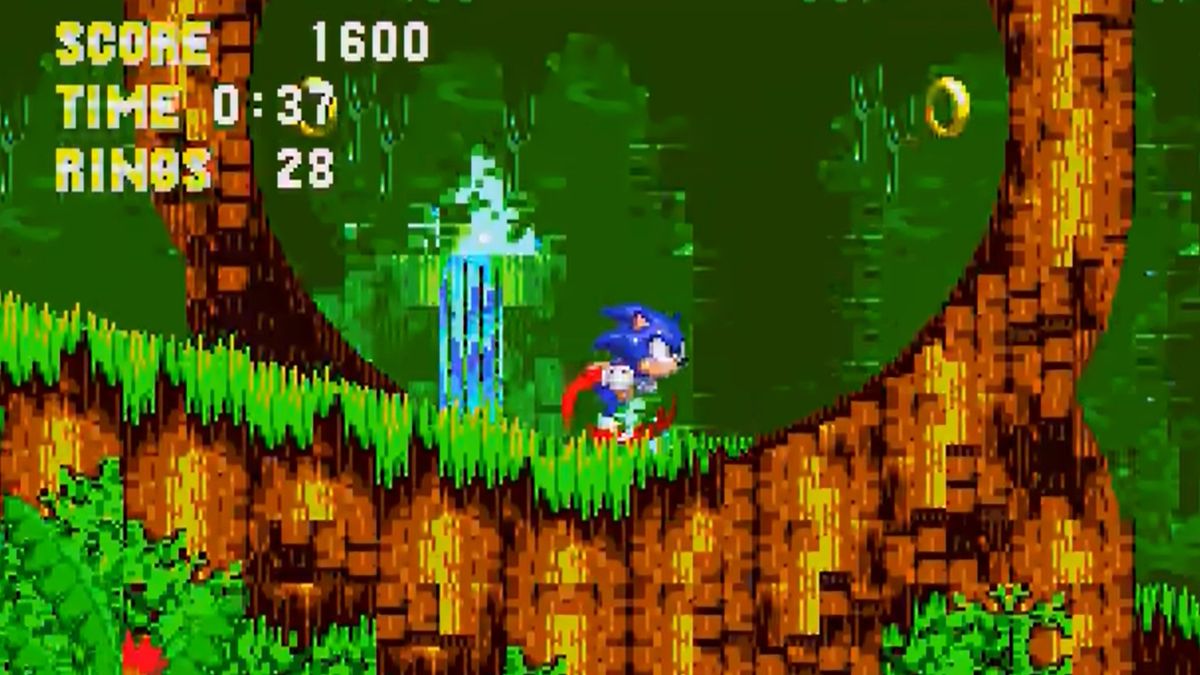
Some fans celebrated the 30th anniversary of Sonic the Hedgehog 3 earlier this year. There’s certainly nothing wrong with that. However, it’s worth noting that the 30th anniversary of the true, complete Sonic 3 is actually on Oct. 18.
See, the Sega Genesis release of Sonic 3 in February 1994 only gave players half of the intended game. It was initially conceived as a far more ambitious project, meant to be bigger and better than its predecessor in every way—more levels, bosses, story, more everything.
Unfortunately, the developers at Sega Technical Institute’s ambitions greatly exceeded their timeframe and budget. The game would simply be too large and costly to cram everything they had planned into one cartridge. Additionally, Sega already had a promotional deal with McDonald’s in place for that February, meaning a game had to be complete and in gamers’ hands to coincide with that campaign. Delaying the game was out of the question, so they availed themselves of their only other option—split Sonic 3 into two parts.
Of course, kids in the early ’90s had no idea they were only playing the first half of a larger game when Sonic 3 hit store shelves, so seeing another “sequel,” Sonic & Knuckles, released that same year was a delightful surprise. Separately, both games certainly stood on their own. Sonic 3 introduced many great new features to the series, including a save system, interconnected levels, mini bosses, and even cutscenes, though its short length hampered its potential. Sonic & Knuckles, being the latter half of Sonic 3’s story, felt like a significantly more epic tale and featured a new playable character in Knuckles the Echidna, but also suffered from a brief length and lack of Sonic 3’s save system. While enjoyable in their own rights, both games did feel like they were missing something, like they were two halves of a much grander whole.
Doubtless, Sega Technical Institute wanted fans to enjoy the complete Sonic 3 experience as it was originally meant to be. Thus, they crafted the Sonic & Knuckles cartridge with innovative, new lock-on technology. Players could flip open the top of the cart and insert their Sonic 3 cartridge into it, combining the games into one gigantic adventure. Despite the detour, Sonic Team was ultimately able to deliver the game they had set out to make—and it was glorious.
Gameplay-wise, the complete Sonic 3 isn’t much different than its predecessors. Sonic and crew speed through 2-act levels, bopping Eggman’s robots along the way before facing off against the doctor himself in one of his nefarious mechs. Where the game truly shines is in its sense of scale. It starts with the game’s narrative, which packs more story into its iconic opening cutscene than Sonic 2 in its entirety.
Sonic 3 begins immediately where 2 left off. Sonic has severely damaged Eggman’s space station, the Death Egg, causing it to crash land onto a mysterious floating island. Eggman tricks the island’s guardian, Knuckles the Echidna, into turning against Sonic, keeping both parties distracted and giving him time to repair his superweapon.
It’s a fairly straightforward tale, but the game’s new bells and whistles enhance the story in ways far beyond those of Sonic 1 and 2. As you zip through the zones, you’ll occasionally run into Knuckles, who springs various traps on the blue speedster. He may push a boulder on Sonic that sends him careening into lava or hamper a level’s visibility by killing the lights. These short cutscenes provide refreshing breaks during gameplay and occasionally even alter the level’s structure, keeping players engaged.
The game also includes the aforementioned transitions from one level to the next. Instead of the screen simply fading to black upon completion of a level before fading into a completely new area, small interactive cutscenes showcase Sonic moving from one location to another. For example, Sonic is shot out of a cannon at the end of Carnival Night onto the cold mountains of Ice Cap, or leaps onto a passing battleship at the end of Mushroom Hill, leading into Flying Battery. As a result, the levels in Sonic 3 feel much more interconnected, like they’re part of a larger world instead of an assortment of random locations.
This all comes to a head in the game’s epic climax as the story shifts into overdrive. If you’re playing Sonic 3 by itself, Sonic faces off against Eggman one final time on the deck of the Death Egg, and the doctor’s resulting defeat sets off a chain reaction that blows up the superweapon for good. But if you attach Sonic 3 to Sonic & Knuckles, you’ll discover that the Death Egg has simply crashed atop the island’s volcano, kicking off the second half of the game.
The climax far outshines anything the vanilla Sonic 3 has to offer, featuring numerous iconic moments like Sonic’s final face off with Knuckles; Eggman stealing the island’s power source, the Master Emerald; Sonic racing up a crumbling spire to catch up to the relaunched Death Egg; and of course, the unforgettable final final battle as Super Sonic races through space to catch a fleeing Eggman. The payoff of these immensely satisfying moments doesn’t feel nearly as strong without the plot buildup the Sonic 3 half of the story provides, and simply playing the vanilla Sonic 3 denies you these moments entirely.
That’s to say nothing of all the other additional content that the complete version of Sonic 3 features, including a full story mode for Knuckles, access to previously inaccessible areas from the base Sonic 3, alternate boss encounters, and the first and thus far only appearance of the Super Emeralds and a new super form for Sonic, Hyper Sonic.
No doubt Sega Technical Institute knew they had something special on their hands when initially developing Sonic the Hedgehog 3. Despite the limitations that time and technology imposed on them, they used their ingenuity to still deliver a masterpiece that, even 30 years later, remains a crown jewel of the Sonic franchise.
The post 30 Years Ago, Two Good Sonic the Hedgehog Games Combined Into One Masterpiece appeared first on Den of Geek.






